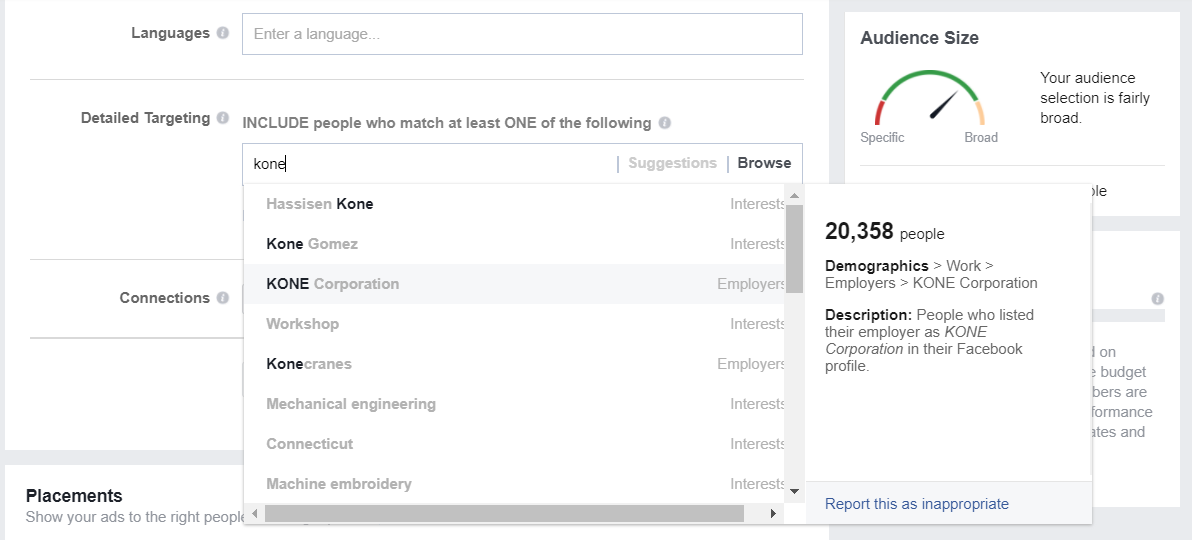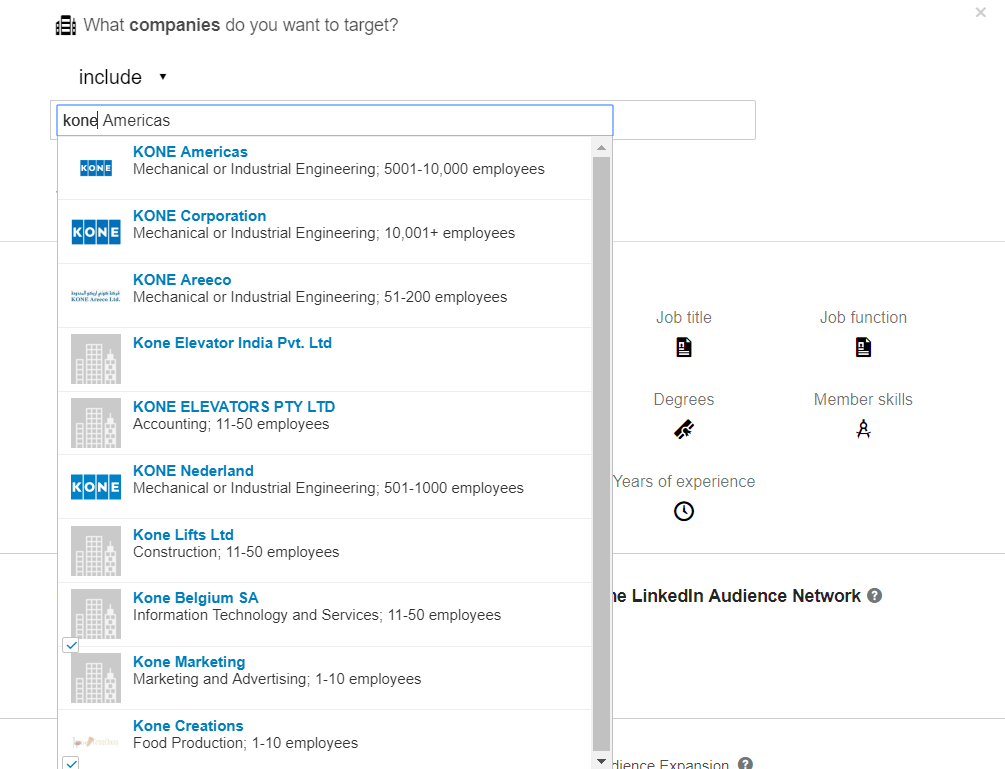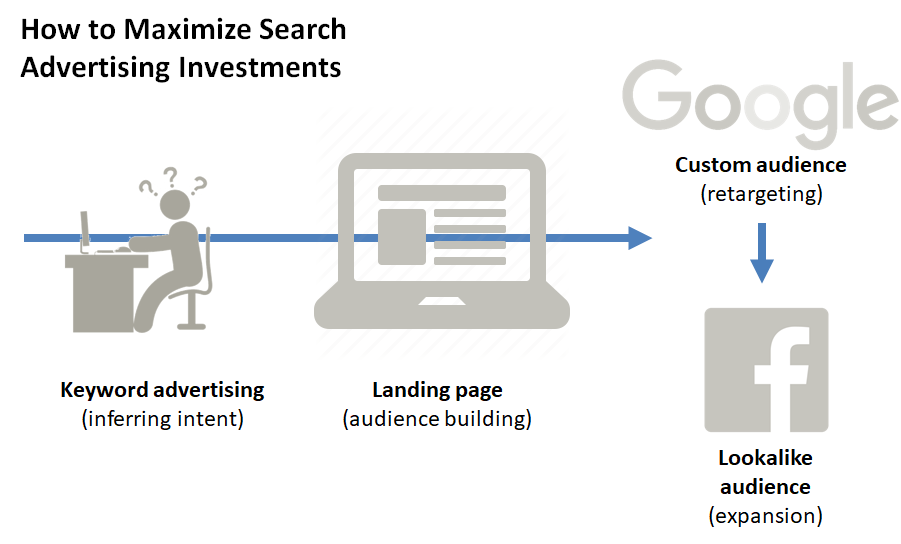Introduction
It *is* indeed the question – most often focus of B2B digital marketing is on lead generation and marketing automation. Much less has been written about targeting.
Yet, B2B targeting is far from having been solved. The typical conversation between decision makers and agencies goes something like this.
Client: “All this online advertising is great – but I don’t want to reach regular people on Facebook. How can I reach managers who are interested in buying my products?”
So far the agency’s answer has been something like: “Well Sir, even the managers are using Facebook!”
Which, although true, remains as a quite shallow answer to a serious concern. Especially because the chance of finding the managers is in proportion to their prevalence in the general Facebook audience – that is, very tiny. Unless we solve the problem of targeting.
Solving the B2B targeting problem
Now, I’ve been interested in this question for a while. So far, I can see four tactics for reaching B2B audiences with digital marketing:
- Keyword targeting
- Manual display placements
- Advanced targeting criteria
- Audience looping process
Let’s explore each of these.
First, obviously we can opt for intent-based search marketing. When there is search volume, search advertising tends to outperform other digital marketing channels in terms of cost-efficiency. That’s because people are actively seeking for the products and services that show in the ads. However, the problem is that the industrial search volumes tend to be small in many verticals, leaving the impact on revenue very minimal. As such, the B2B marketer needs to look elsewhere to increase the number of leads.
Second, to get extra traffic we can go and buy media from known business press (e.g., Forbes, Wall Street Journal; you get the picture). The downsides of this approach are at least three:
a) CPM prices are often high in these venues, resulting typically in poor ROI – this is partly because the way ad space is priced relies on archaic methods, such as selling impressions, instead of modern approaches like click auctions
b) display advertising generally suffers from multiple problems, including banner blindness, ad clutter, and ad blockers. If you haven’t noticed, people don’t really like banner ads, or at least they seem to like them a lot less than text ads and Facebook Ads which are often better targeted and less intrusive
c) uncertainty – how can we know that the people of our industry are reading this publication? There may be other publications that they read, but those might not always be available to display advertisers.
Third, we can use various targeting parameters available in online platforms. For example, in Facebook and GDN you can find people by income level (e.g., top 10% of income earners) and net worth. However, here we assume that more rich people have better jobs, which is true in statistical sense but does not narrow the audience down enough to reach the B2B decision makers in our industry. Thus, it is better if we can get into direct targeting criteria, such as job position and company. And, we can.
For example, here is Facebook targeting for people who for Kone, the Finnish elevator company.

Figure 1 Targeting company employees on Facebook
In a similar vein, we can target a) industries and b) job titles on Facebook. Below are examples of both.
A. The current industries on Facebook Ads
- Work > Industries > Management
- Work > Industries > Administrative
- Work > Industries > Sales
- Work > Industries > Production
- Work > Industries > Personal Care
- Work > Industries > Education and Library
- Work > Industries > Arts, Entertainment, Sports and Media
- Work > Industries > Healthcare and Medical
- Work > Industries > Transportation and Moving
B. Job Titles with search query ‘manager’:
- Manager
- Manager Employers
- Talent manager
- Manager (baseball)
- Manager (association football)
- Hotel manager
- Sales Manager
- Business Manager
- Branch Manager
- Relationship Manager
- Marketing Manager
- Finance Manager
- Store Manager
For example, we could target people who work for ‘Kone’ and are ‘managers’. While this might work for corporations, targeting smaller companies is not possible because they are missing from Facebook’s database. We could also try and find the physical addresses of the corporations, and use geo-targeting to reach them – although without IP targeting (not available e.g. in Google and FB but can be purchased with big money elsewhere) it’s a shotgun approach, unless the company is located in the middle of nowhere. Overall, the problems of using targeting criteria include validation, sparsity and availability. I discuss these in the following.
a) validation – the accuracy of this data is not guaranteed, and we have no way of knowing that the ad platforms correctly classifies people. For example, I’ve seen people who most certainly don’t work for Facebook write Facebook as their employer.
b) sparsity – secondly, not that many people declare their workplace in Facebook, so the data is sparse and we don’t end up making a great number of qualified matches.
c) availability – all data is not available in all locations – e.g., Finland is missing the income level targeting.
Therein comes LinkedIn. As you can see from the following figure, LinkedIn provides several different targeting options that make it the most potential B2B marketing platform in the world.

Figure 2 LinkedIn targeting options
For example, we are likely to reach the proper Kone employees in different sub-companies, as visible from the following figure.

Figure 3 Company targeting on LinkedIn
While people may be careless about providing the correct job information on Facebook, on LinkedIn it is very rare that people would fake their job positions. Such behavior is easily captured and reported.
The downsides of LinkedIn are that a) the ad platform is less developed than those of Google and Facebook. If you’d like to rank them, ‘Google > Facebook > LinkedIn’ is the order from best to worst in terms of functionalities, although LinkedIn is rapidly catching up. Addtionally, b) the prices are considerably higher on LinkedIn than on Facebook or Google.
In the attempt to combine some of the good parts of each technique, I’ve created a simple process whereby we obtain leads through effective LinkedIn advertising and build segmented audiences for retargeting. This process is illustrated in the following figure.

Figure 4 Audience looping process
In particular, the idea is to create special landing pages that have a unique pixel configuration that corresponds to that audience — for example, you can “Managers from Mid-West US” who are targeted to a specific landing page that has unique Google and Facebook pixels with the proper description installed.
Managers from Mid-West -> Landing page A <–> Pixel A
Managers from upstate NY -> Landing page B <–> Pixel B
This way, you can segment your B2B audience further, and in retargeting through GDN, Facebook and potential other networks such as AdRoll, address them with highly tailored communication. In a similar vein, you want to cross-target to visitors you reach from those channels also on LinkedIn – see the figure.

Figure 5 Cross-retargeting
If you already have an email database (CRM, newsletter lists), you should obviously use that to build custom audiences, and then use lookalike audiences to maximize reach (called ‘Audience expansion’ on LinkedIn).
Since all the platforms provide the same metrics (CPC, clicks, conversions), the allocation of your budget can be elastically applied to where it provides the best return. This is aligned with optimization best practices. To identify the proper companies and job roles, you can do investigative lead research work by using tools such as Leadfeeder, LinkedIn Sales Navigator, Ghostery, and Vainu.io.
Conclusion
There are many targeting options for B2B digital marketing. For example,
- income
- net worth
- IP address
- industry
- company
- job title
Each has some strength and weaknesses. Ideally, the B2B digital marketing process captures the best parts of each platforms. Because we use LinkedIn, we can be sure that the seed audience is of high quality and accuracy. Then, we use the other platform’s superior reach and cheaper prices to re-address this audience with what I call ‘continued information’ (=not the same we told them already, but something more). We can also use GDN to narrow down the placement, thereby including only specific venues in retargeting.
Targeting or discovery?
Finally, I wanted to discuss an important matter. That is, some proponents of digital marketing suggest to foresake the notion of targeting altogether and focus on ‘inbound marketing’. The theory goes so that being present in social media venues where the industry folks participate, e.g. by answering their questions, one can build a reputation of opinion leader and therefore gain organic leads. Moreover, the inbound tactics entail the publication of free knowledge resources, such as ebooks, webinar and blog posts, all intended to attract organic traffic from social media and search engines to the company’s website. I’ve previously described inbound marketing as a paradigm that defines people as rational agents actively engaged in information retrieval activities, a view which contrasts seeing them as passive “targets” of advertising. Depending on which paradigm you subscribe to as a marketer, you might want to either maximize your targeting or your discoverability.
To many, it makes sense to view people as active information seekers. However, in the flipside I’ve observed inbound marketing is often uncertain and time-consuming process. In addition, companies engaged in struggle to measure their efforts effectively and actually deliver a credible ROI figure for inbound. Finally, the capabilities needed for that correspond to those needed for running a magazine publication, i.e. are not readily available in most organizations. The content game is fiercely competitive, and when you normalize the cost, e.g. CPM prices can be higher than for advertising. Or, the reach is very low, meaning that you really don’t get the impact you’re after. In my opinion, it makes no sense to foresake advertising – advertising should be the primary element in the marketing mix, and should you want to try out inbound marketing, its results should be transformed to conmensurable metrics that enable comparison between advertising and inbound marketing.
Please share if you have further ideas!
Further reading
Using Facebook Ads for B2B Targeting: http://www.practicalecommerce.com/Using-Facebook-Ads-for-B2B-Targeting
Google AdWords for B2B Organizations: 8 Questions Leadership Should Ask: https://komarketing.com/blog/google-adwords-for-b2b-organizations/
15 Audiences You Should Be Targeting with B2B Facebook Ads: https://komarketing.com/blog/15-audiences-you-should-be-targeting-with-b2b-facebook-ads/